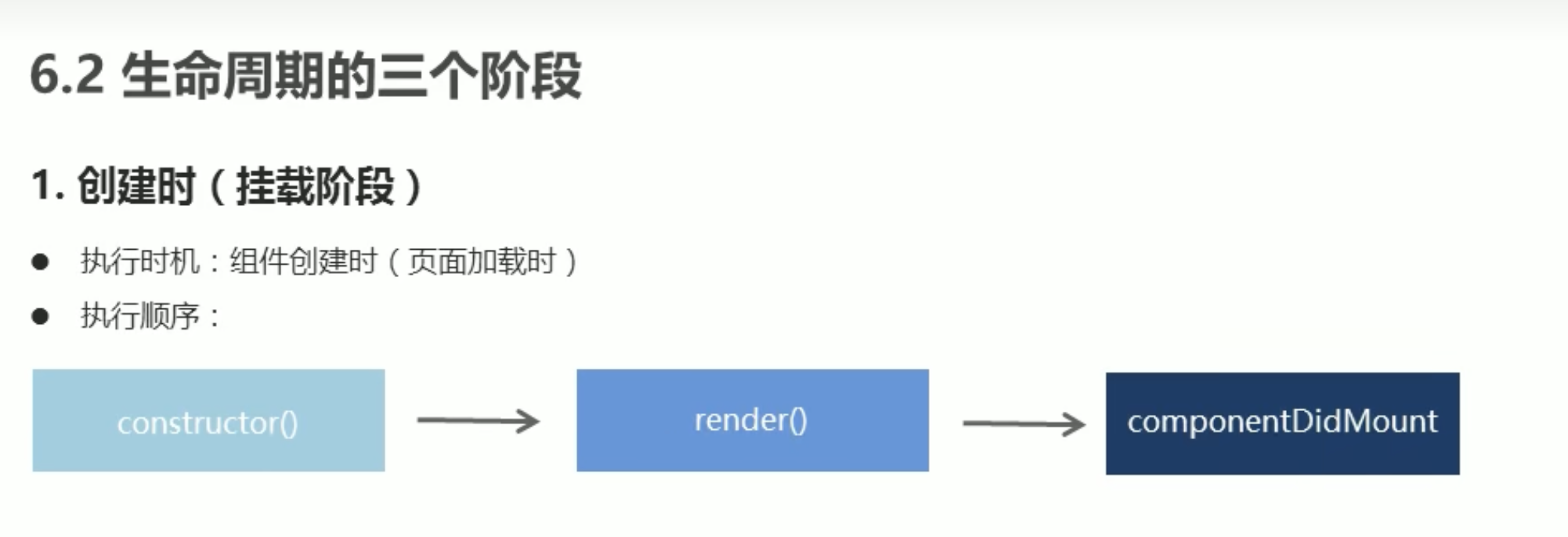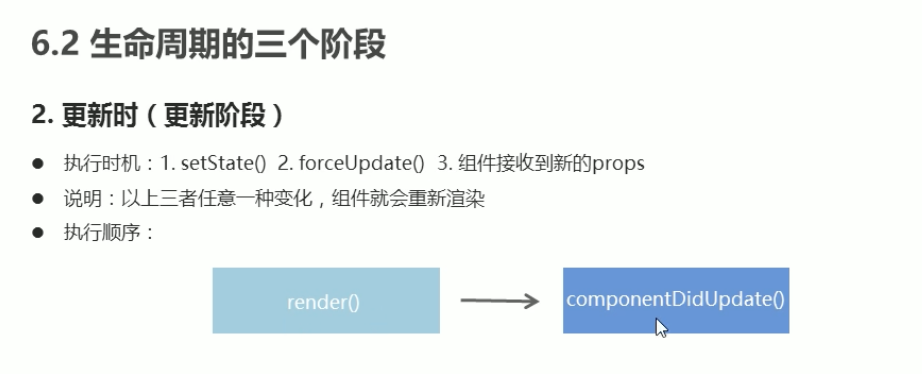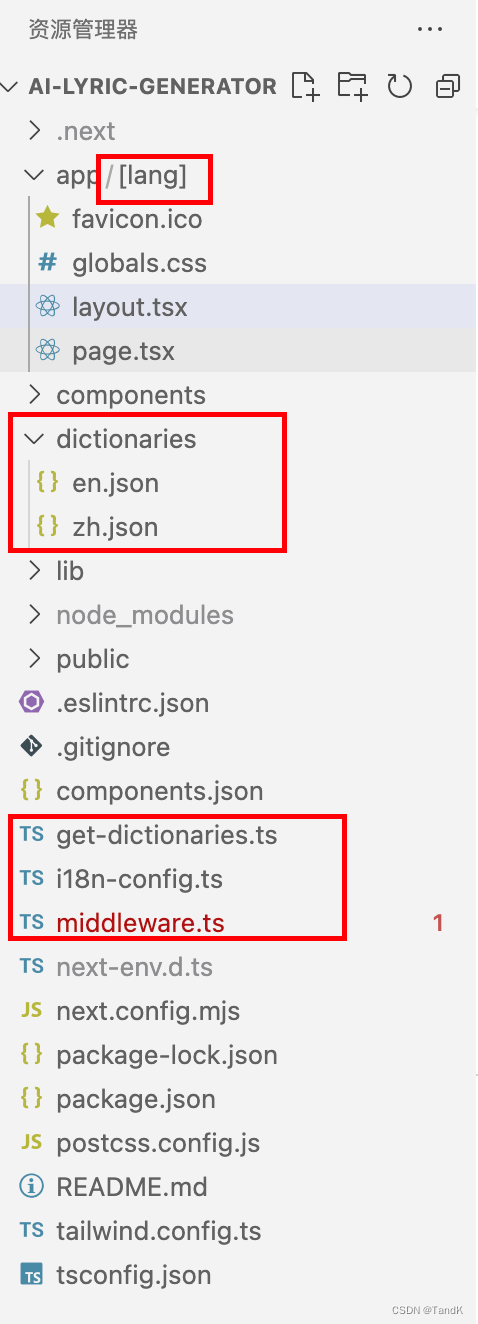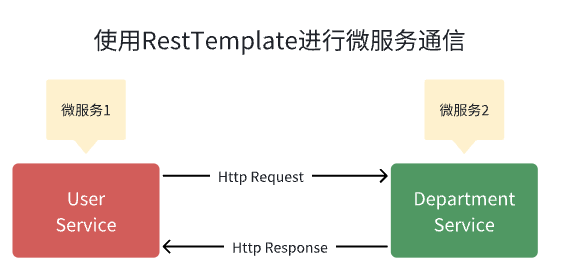概述

同时有:

1.1 创建时 的生命周期执行顺序
编写以下代码,从而验证constructor,render,componentDidMount的顺序:
class App5 extends React.Component { constructor(props) { super(props) console.warn("生命周期钩子函数:constructor") } componentDidMount() { console.warn("生命周期钩子函数:componentDidMount") } render() { console.warn("生命周期钩子函数:render") return ( <div> <h3></h3> <h1>统计豆豆被打的次数:</h1> <button id='btn'>打豆豆</button> </div> ) } } ReactDOM.render(<App5/>,document.getElementById('root9'))
在开发者工具中发现执行顺序为:


当然我们对这三个状态还有以下总结:

备注:不能在render里调用setstate的原因是:在render里既能够更新状态,也会更新ui,具体可以参考前面的生命周期图,render里调用setstate,而setstate也会继续调用render,这样就会导致递归调用,从而导致error。
一定要在render里进行调用setstate,我们可以采用箭头函数,同时可以将this从render当中抽离出来,这样相当于在生命周期的“更新时”再继续更新Ui,代码如下:
class AppThree extends React.Component { state={ count:0 } //组件当中的state,可以通过this.state来进行调用 //使用setState,来修改数据,直接使用this.state.count+1,来修改是行不通的 //备注:如果直接使用事件抽离的方法,把render函数当中的逻辑抽离出来,但是在当前class的其他 //的函数当中,是无法调用到this的。 因此在其他函数中无法调用this.setState是肯定的。 render(){ return ( <div> <h1>计数器</h1> <button onClick={() => { this.setState({ count:this.state.count+1 }) } }> +1</button> <div>这是一个有状态组件当中的数据count。{this.state.count}</div> </div> ) } }
这样就可以保证这里的this不是指的render里的this,而是render外部的this。当然还可以将这个this.setstate的逻辑进行抽离出来:
class AppSix extends React.Component { state={ count:0 } onIncrement = () => { this.setState({ count:this.state.count+1 }) } render(){ return ( <div> <h1>计数器</h1> {/*在react当中,onclick方法都需要用花括号括起来,再来表示其中的方法,这里的箭头函数可以直接实现调用,只是没有对这个箭头函数 进行命名,也就是令 hello = () => this.onIncrement(),是否命名都一样的 */} <button onClick={this.onIncrement}>+1</button> ) } } ReactDOM.render(<AppSix />, document.getElementById('event_six'))
对于componentDidMount,我们可以在里面进行网络请求和dom操作,因为它是等渲染完成后,才开始进行这个生命进程。
1.2 更新时的生命周期
在更新时,也就是值的初始的渲染都完成了,在渲染完成后,用户如果点击了界面,网页如何使用钩子函数对不同状态下的网页进行检测和更新。有三种情况都会导致组件进行重新渲染,分别是调用:
- New props(新参数被调用)
- setState()
- forceUpdate() : 也就是强制更新
class App6 extends React.Component{ constructor(props) { super(props) this.state={ count:0 } } handleClick= () => { this.setState({ count:this.state.count+1 }) } render() { return ( <div> <h3>5.2 更新时的生命周期</h3> <Counter2 count={this.state.count }/> <button onClick={this.handleClick}>打豆豆</button> </div> ) } } class Counter2 extends React.Component { render() { return <h3>统计豆豆被打的次数:{this.props.count}</h3> } } ReactDOM.render(<App6/>,document.getElementById('root10'))
这里用到了子组件counter2,并且子组件接受到了参数props,因此在接受到了参数props后,确实会对ui进行更新,也就是进行重新渲染,我们点击一次按钮,子组件都会接受到一次参数,这样打豆豆的次数就会发生变化。
我们可以看到ComponentDidUpdate()是在render函数之后,才开始执行的,因此有以下的的图片:

1.3 卸载时的生命周期

我们在打完豆豆超过3次后,子组件消失,因此可以使用compomentWillUnmount函数,执行清理工作。代码如下:
class App6 extends React.Component{ constructor(props) { super(props) this.state={ count:0 } } handleClick= () => { this.setState({ count:this.state.count+1 }) } render() { return ( <div> <h3>5.2 更新时的生命周期</h3> { this.state.count > 3 ? ( <p>豆豆被打死了</p> ) :( <Counter2 count={this.state.count }/> ) } <button onClick={this.handleClick}>打豆豆</button> </div> ) } } class Counter2 extends React.Component { render() { console.warn("子组件--更新时--render函数被渲染") return <h3>统计豆豆被打的次数:{this.props.count}</h3> } componentDidUpdate() { console.warn("子组件--更新时--componentDidUpdate函数被渲染") } componentWillUnmount() { //我们在父组件当中规定了这个子组件在超过3次之后销毁,因此销毁后应该调用这个函数 console.warn("子组件--生命周期钩子函数: componentWillUnmount") } } ReactDOM.render(<App6/>,document.getElementById('root10'))
我们在发现子组件消失后,确实compomentWillUnmount函数被执行了,warning被打印出。





















